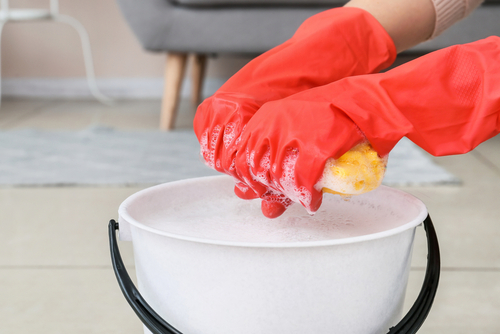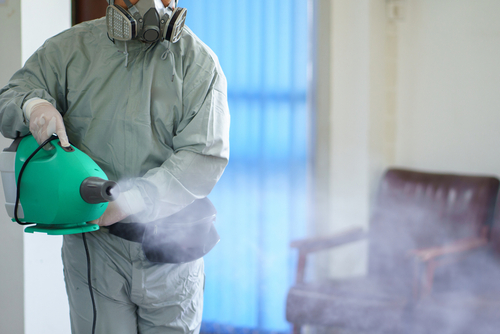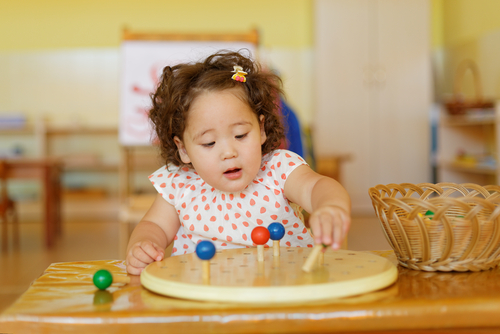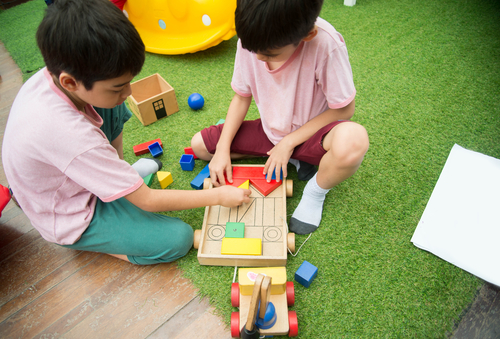
Effective Application of Disinfection Coatings for Offices
February 13, 2024
Maintaining a Disinfected Environment: Tips and Tricks
April 2, 2024Disinfection Considerations for Daycare Centers and Childcare Facilities

Disinfection Considerations for Daycare Centers and Childcare Facilities
Disinfection Considerations for Daycare Centers and Childcare Facilities. Maintaining a pristine and hygienic environment within childcare centers and facilities is paramount for safeguarding the health and well-being of children and staff alike.
The unique dynamics of these settings—characterized by close interactions, shared resources, and high-touch surfaces—necessitate stringent disinfection considerations.
This comprehensive guide delves into the essential aspects of disinfection for childcare environments, outlining key principles, safe practices, and the collaborative role of staff and parents in fostering a culture of hygiene and health.
The Unique Needs of Childcare Environments
Childcare settings are bustling environments where young children learn, play, and grow.
However, these same activities make them hotspots for the transmission of infections due to frequent contact with shared toys, surfaces, and close interactions among children.
Pathogens such as the common cold, influenza, and norovirus are prevalent in childcare centers, often spread through respiratory droplets, contact with contaminated surfaces, or shared items among children.
Infections can significantly affect the health of children and staff, leading to absenteeism, disrupted learning, and in severe cases, hospitalization.
Protecting this vulnerable population through effective disinfection strategies is therefore crucial.
Key Disinfection Principles for Childcare Facilities

Cleaning, Sanitizing, and Disinfecting
Understanding the distinction between cleaning (removing dirt and impurities), sanitizing (reducing bacteria to safe levels), and disinfecting (killing germs) is fundamental in applying the appropriate measures for various situations within childcare settings.
Selecting Safe and Effective Disinfectants for Use Around Children
Choosing disinfectants that are both effective against pathogens and safe for use around children is essential.
Products should ideally be EPA-registered and used according to the manufacturer’s instructions to ensure safety and efficacy.
Developing a Comprehensive Disinfection Plan
A thorough disinfection plan identifies high-touch and high-risk areas, establishes routine cleaning schedules, and includes protocols for managing sick children or staff to prevent outbreaks.
Safe Disinfection Practices

Safety guidelines include ensuring proper ventilation, using protective gear during application, and storing cleaning agents securely away from children’s reach.
Exploring natural disinfection alternatives, such as vinegar or hydrogen peroxide solutions, can minimize chemical exposure.
However, their use should be based on effectiveness against specific pathogens.
Hand hygiene is among the most effective measures to prevent the spread of infections.
Regular handwashing with soap and water or the use of alcohol-based hand sanitizers should be encouraged among children and staff.
Training and Education for Staff
Comprehensive training ensures staff are knowledgeable about disinfection techniques, the proper use of disinfectants, and hygiene practices to minimize the risk of infection spread.
Educational activities and routines that promote hand hygiene, respiratory etiquette, and personal cleanliness can significantly contribute to a health-conscious environment.
Environmental Modifications for Easier Disinfection

Optimizing the design and layout of childcare facilities with easy-to-clean materials and surfaces can simplify disinfection processes and reduce contamination risks.
Toys and materials should be non-porous when possible, regularly disinfected, and rotated to ensure that all items are cleaned systematically.
Engaging Parents and Guardians
Open communication with families about the facility’s disinfection policies and procedures is vital for aligning practices and expectations between the home and childcare settings.
Guiding parents in maintaining hygiene standards at home, including regular handwashing and staying home when sick, supports the collective effort to keep the childcare environment safe.
Regulatory Compliance and Best Practices
Staying informed about and compliant with local health and safety regulations ensures that childcare facilities meet the required standards for disinfection and hygiene.
Regular assessment of cleanliness and hygiene practices helps in identifying areas for improvement and adjusting protocols to enhance effectiveness.
Frequently Asked Questions (FAQs)

Can air purifiers replace the need for manual disinfection in childcare environments?
While air purifiers can help reduce airborne contaminants and improve indoor air quality, they cannot completely replace the need for manual cleaning and disinfection of surfaces and objects that children frequently touch.
How should childcare centers handle soft toys and materials that cannot be easily disinfected?
Soft toys and materials should be machine washed regularly using the warmest appropriate water setting and allowed to dry completely.
Alternatively, rotating toys out of use for a period of time may also help minimize the risk of contamination.
Are there specific disinfection protocols for diaper-changing stations?
Diaper-changing stations require rigorous disinfection protocols, including using disposable liners, wearing gloves, and applying an EPA-registered disinfectant after each use to prevent cross-contamination.
How can childcare facilities ensure outdoor play areas are safely disinfected?
Outdoor play areas should be inspected regularly for cleanliness and safety.
Hard surfaces can be cleaned with water and soap, while shared outdoor toys and equipment should be disinfected daily, especially if they are used by different groups of children.
What measures should be taken if there is an outbreak of an infectious disease within a childcare center?
In the event of an outbreak, childcare centers should immediately notify local health authorities, isolate affected individuals, enhance disinfection measures throughout the facility, and potentially temporarily close affected areas or the entire center to prevent further spread of the disease.
Disinfection Considerations for Daycare Centers and Childcare Facilities – Conclusion

The ongoing importance of disinfection in childcare settings cannot be overstated.
Balancing safety, effectiveness, and practicality in disinfection practices is paramount for protecting the health of children and staff.
By committing to a culture of hygiene and health, childcare facilities can provide a nurturing environment conducive to learning and growth, while minimizing the risk of infections!
Are you looking for professional and reliable disinfection services in Singapore? Contact us today!



